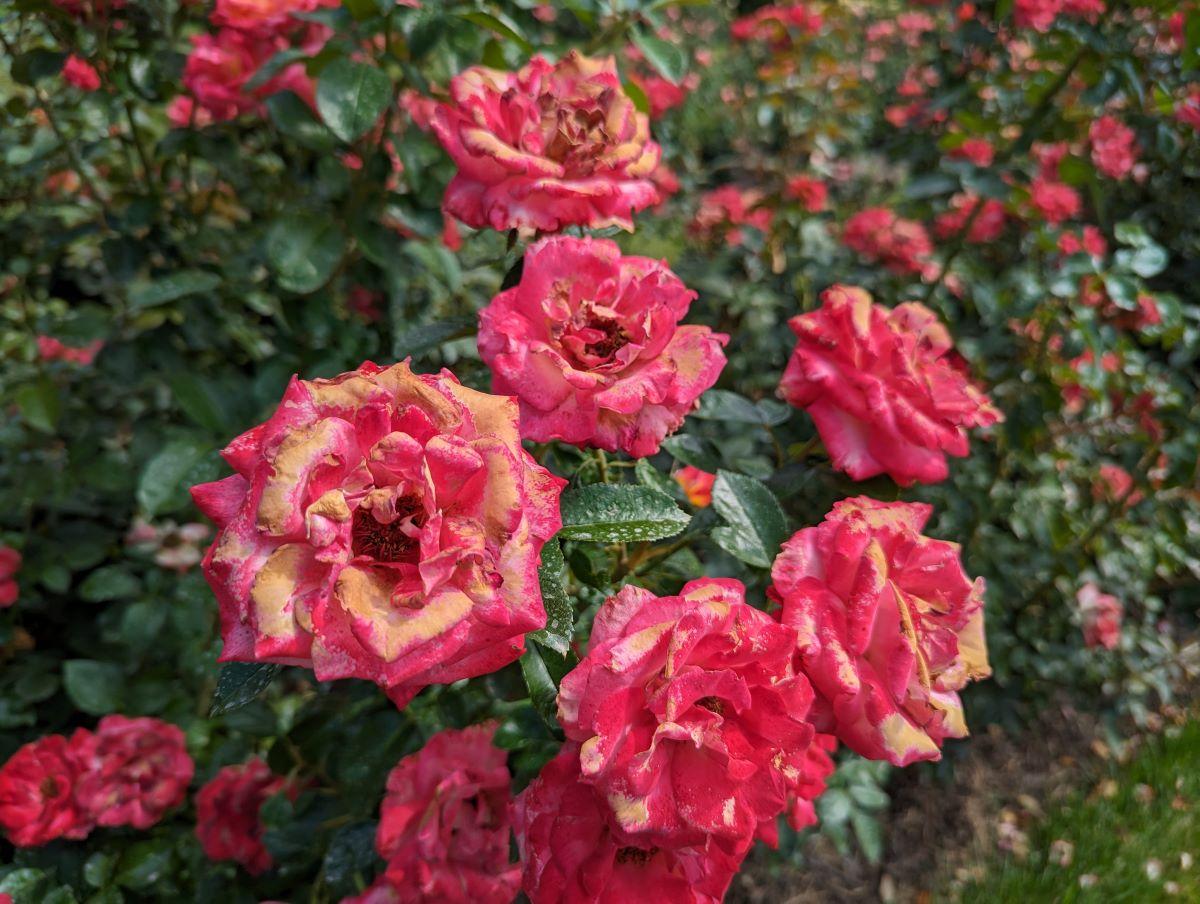What is phytotoxicity?
Plant tissue damage from chemical exposure is called phytotoxicity (phyto relates to plants). It may or may not be an irreversible condition: the severity of plant injury will depend on the type and amount of chemicals involved, and healthy new growth may eventually replace damaged foliage.
What causes phytotoxic damage?
There are several ways chemical exposure can damage plants. Among the most common is drift from a nearby pesticide application or from direct contact with a pesticide. When diagnosing suspected phytotoxicity, knowing the care history of the plant or what recently changed in its environment can help narrow down which factor was likely responsible for the damage.
- Pesticides (insecticides, miticides, herbicides, and fungicides) can injure plants in certain conditions, even when used as directed. Using home remedy alternatives to registered pesticides are also more likely to cause damage. Common risks for phytotoxicity include application mistakes like:
- overdosing (using too concentrated of a solution, or making follow-up applications too soon)
- overlap with other pesticides (interaction between chemicals)
- treatment of stressed plants, or plant species not listed on the pesticide label
- treatment in warm or windy weather that evaporates or moves airborne chemical into other areas
- Salts leach moisture from plant cells and kill them, causing a kind of chemical burn. Salts in this context comprise a range of mineral compounds, and are not limited to sodium chloride (table salt or rock salt). Leaves and roots can be exposed to salt residue from:
- ice-melting products
- fertilizer that was applied dry and not brushed or rinsed off of foliage
- fertilizer which was over-applied
- Cleaning agents, like those for window glass or for pressure-washing decking, siding, and gutters, can drift onto nearby foliage from spray mist and drips.
- Gasses and leachates from materials that have become anaerobic (decaying without oxygen), or which generate air pollution, can poison plant tissues.
- Off-gassing and degradation byproducts of “sour” mulch (ammonia gas, hydrogen sulfide, acid, and alcohol) can scorch foliage in close contact.
- Exhaust fumes and heat can burn foliage near idle engines or power tools.
- Ground-level ozone on poor air quality days can injure sensitive plants.
When is phytotoxicity risk higher?
Some plant species or particular cultivars are more sensitive to certain chemicals than others. Conditions that can make any plant more vulnerable to phytotoxic injury include:
- drought or insufficient soil moisture; wilting foliage
- slow leaf drying due to wet weather, high humidity, or overcast skies
- temperatures above about 85℉, particularly for pesticides with active ingredients using oil, soap, and sulfur compounds
- cool, damp weather during applications of copper-based fungicides
- pre-existing tissue damage from insect or mite feeding, infection, or frost injury
- recent application of an incompatible pesticide
What are the symptoms of damage?
Damage to desirable plants can range from minor (temporarily altered growth) to lethal. Common symptoms, while not exclusive to phytotoxicity, include:
- spots or blotches on leaves or petals that turn yellow, light brown, or darker, often looking bleached, burned, or “scorched”
- deformed leaves, often twisted, curled, shrunken, or more slender than normal
- sudden and prolific leaf shedding, especially combined with scorch or a change in color to yellow or near-black
- scarring on fruits, such as russeting (patches of rough, reddish-brown discoloration) on the skin of tree fruits
